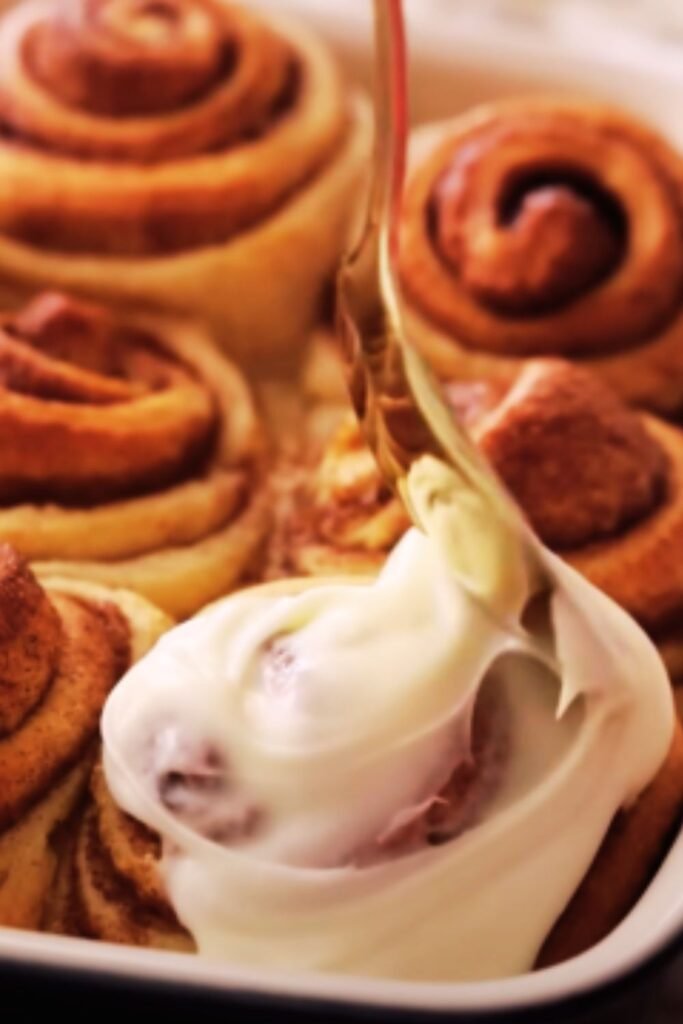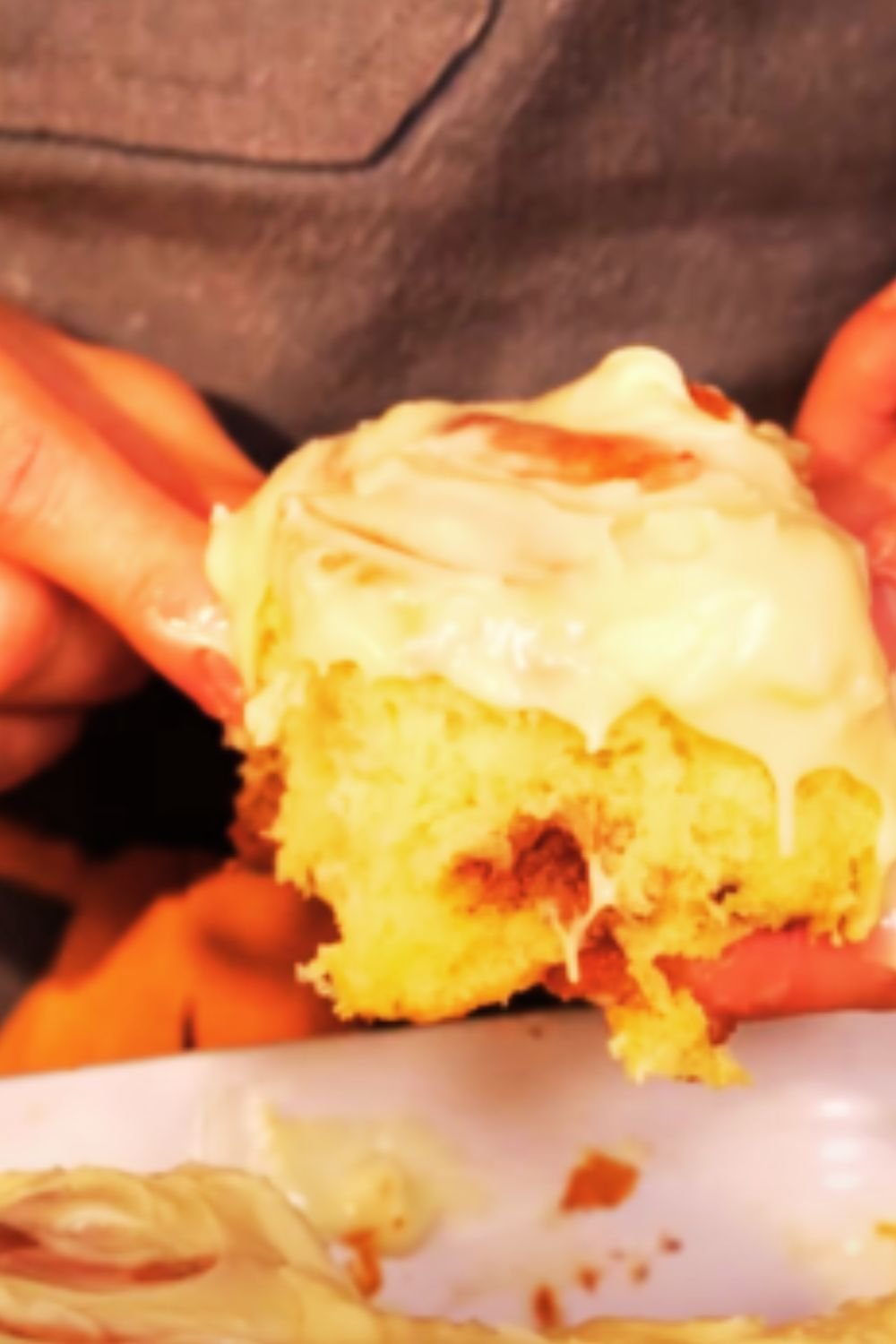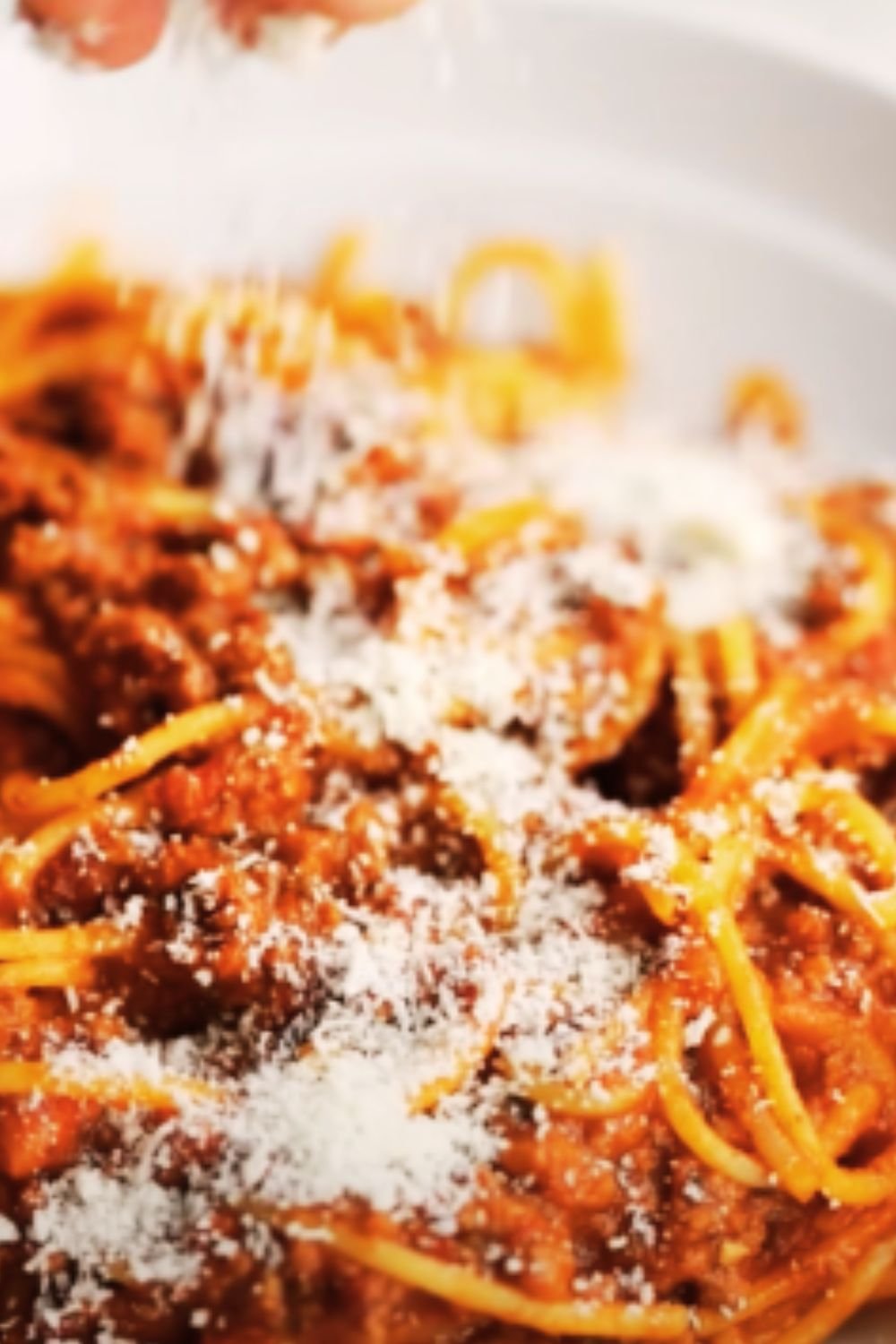There’s something magical about the aroma of freshly baked cinnamon rolls wafting through the house on a lazy weekend morning. That sweet, spicy scent of cinnamon and sugar that fills every corner, drawing everyone to the kitchen with anticipation. I’ve spent years perfecting my cinnamon roll recipe, and today I’m thrilled to share all my secrets for creating truly exceptional cinnamon rolls that will have your family and friends begging for more.
Why This Recipe Stands Out
I don’t say this lightly, but these truly are the best cinnamon rolls you’ll ever make. What makes them special? It’s a combination of several key factors:
- A perfectly enriched dough that’s soft yet sturdy
- The ideal cinnamon-to-sugar ratio in the filling
- A proofing technique that ensures maximum fluffiness
- A versatile frosting that complements without overwhelming
Most importantly, I’ve tested this recipe dozens of times, tweaking amounts and techniques until achieving what I believe is cinnamon roll perfection. Let me walk you through creating these heavenly treats step by step.
Essential Ingredients
The secret to exceptional cinnamon rolls starts with quality ingredients. Here’s what you’ll need:
For the Dough:
- 4½ cups all-purpose flour
- ⅓ cup granulated sugar
- 2 teaspoons salt
- 2¼ teaspoons instant yeast (1 packet)
- 1 cup whole milk, warmed to 110°F
- ⅓ cup unsalted butter, melted
- 2 large eggs, room temperature
- 1 teaspoon vanilla extract
For the Filling:
- ¾ cup packed brown sugar
- 2 tablespoons ground cinnamon
- ¼ cup unsalted butter, softened to room temperature
For the Classic Cream Cheese Frosting:
- 4 ounces cream cheese, softened
- 3 tablespoons unsalted butter, softened
- 1 cup powdered sugar
- ½ teaspoon vanilla extract
- Pinch of salt
Equipment You’ll Need
Before diving in, make sure you have these kitchen tools on hand:
- Stand mixer with dough hook attachment (or mixing bowl if kneading by hand)
- Rolling pin
- 9×13 inch baking pan
- Pastry brush
- Sharp knife or unflavored dental floss for cutting rolls
- Measuring cups and spoons
- Mixing bowls
- Wire cooling rack
The Science Behind Perfect Cinnamon Rolls
Understanding the science behind great cinnamon rolls has helped me perfect my recipe. Here’s what you need to know:
| Component | Scientific Role | Impact on Cinnamon Rolls |
|---|---|---|
| Yeast | Converts sugars to carbon dioxide | Creates air pockets for fluffy texture |
| Gluten (in flour) | Forms elastic networks when developed | Provides structure and chewiness |
| Sugar | Food for yeast; hygroscopic (attracts water) | Speeds fermentation; keeps rolls moist |
| Fat (butter, eggs) | Coats gluten strands | Tenderizes dough; adds richness |
| Milk | Provides protein and sugar | Enhances browning; adds flavor |
| Salt | Controls yeast activity; enhances flavor | Prevents over-rising; balances sweetness |
| Cinnamon | Contains volatile oils | Provides signature aroma and flavor |
Step-by-Step Instructions
Preparing the Dough
- In the bowl of your stand mixer, combine 4 cups of flour, sugar, salt, and instant yeast.
- In a separate bowl, whisk together the warm milk, melted butter, eggs, and vanilla extract.
- With the mixer on low speed using the dough hook, gradually add the wet ingredients to the dry ingredients.
- Mix until the dough comes together, about 2 minutes. If the dough is too sticky, add the remaining ½ cup of flour, 1 tablespoon at a time.
- Increase the speed to medium and knead for 4-5 minutes until the dough is smooth and elastic. The dough should clean the sides of the bowl but still stick slightly to the bottom.
- Form the dough into a ball and place it in a lightly greased bowl. Cover with plastic wrap or a clean kitchen towel.
- Let the dough rise in a warm place for about 1-1½ hours, or until doubled in size.

Rolling and Filling
- Once the dough has doubled, punch it down gently to release excess air.
- On a lightly floured surface, roll the dough into a rectangle approximately 18×12 inches. The dough should be about ¼ inch thick.
- In a small bowl, mix the brown sugar and cinnamon until well combined.
- Spread the softened butter evenly over the dough, leaving a ½-inch border along the top edge.
- Sprinkle the cinnamon-sugar mixture evenly over the buttered dough, pressing it gently into the butter.
- Starting from the long edge closest to you, tightly roll the dough into a log, pinching the seam to seal.
- Using a sharp knife or unflavored dental floss, cut the log into 12 equal pieces, each about 1½ inches thick.
Proofing and Baking
- Arrange the rolls in a greased 9×13 inch baking pan, leaving some space between each roll.
- Cover the pan with plastic wrap or a clean kitchen towel and let the rolls rise again for about 45-60 minutes, or until noticeably puffy. (For overnight cinnamon rolls, see the variation section below.)
- While the rolls are rising, preheat your oven to 350°F (175°C).
- Bake the rolls for 22-25 minutes, or until golden brown on top. If the rolls are browning too quickly, loosely cover them with aluminum foil.
- Remove from the oven and let cool for 5-10 minutes before frosting.
Making the Frosting
- In a medium bowl, beat the softened cream cheese and butter until smooth and creamy.
- Gradually add the powdered sugar, mixing until fully incorporated.
- Stir in the vanilla extract and salt.
- Spread the frosting over the warm (not hot) cinnamon rolls.

My Favorite Variations
One of the things I love about this recipe is how versatile it is. Here are some of my favorite variations:
Overnight Cinnamon Rolls
If you want fresh cinnamon rolls for breakfast without waking up at dawn, prepare the rolls up to the point where they’re sliced and placed in the baking pan. Cover tightly with plastic wrap and refrigerate overnight (up to 12 hours). In the morning, remove from the refrigerator and let stand at room temperature for 30-45 minutes before baking as directed.
Maple Pecan Cinnamon Rolls
Add ¾ cup chopped pecans to the filling mixture. For the frosting, replace the vanilla extract with 2 tablespoons of pure maple syrup and add ¼ teaspoon of maple extract for an extra maple punch.
Orange Cinnamon Rolls
Add 1 tablespoon of orange zest to the dough and 2 teaspoons to the filling. Replace the vanilla in the frosting with 1 tablespoon of fresh orange juice and 1 teaspoon of orange zest.
Chocolate Cinnamon Rolls
Add ½ cup of mini chocolate chips to the filling mixture. For an extra chocolate boost, drizzle melted chocolate over the frosted rolls.
Cardamom Twist
Add 1 teaspoon of ground cardamom to the filling mixture along with the cinnamon for a Swedish-inspired flavor profile.
Troubleshooting Common Issues
Even experienced bakers encounter issues sometimes. Here’s how to troubleshoot common cinnamon roll problems:
| Problem | Likely Cause | Solution |
|---|---|---|
| Dough doesn’t rise | Inactive yeast; too cold environment | Test yeast before using; ensure warm rising environment |
| Rolls are dense | Insufficient kneading; not enough rise time | Knead until dough is elastic; allow full rise time |
| Filling leaks out | Too much butter; not rolled tightly enough | Use correct amount of butter; roll dough tightly |
| Rolls are doughy in center | Underbaked; rolls too large | Bake longer; cut rolls to proper size |
| Frosting too runny | Ingredients too warm; not enough powdered sugar | Chill ingredients; add more powdered sugar |
| Frosting too thick | Not enough liquid | Add milk or cream, 1 teaspoon at a time |
| Uneven roll sizes | Inconsistent cutting technique | Use dental floss or measure before cutting |
Storage and Reheating Tips
These cinnamon rolls taste best on the day they’re baked, but they can be stored for later enjoyment:
- Counter Storage: Store unfrosted or frosted rolls in an airtight container at room temperature for up to 2 days.
- Refrigerator Storage: Refrigerate frosted rolls in an airtight container for up to 5 days.
- Freezer Storage: Freeze unfrosted rolls in an airtight container for up to 2 months. Thaw overnight in the refrigerator before reheating.
Reheating Instructions: To restore that fresh-baked taste, microwave individual rolls for 15-20 seconds or warm in a 300°F oven for 7-10 minutes until heated through.
Serving Suggestions
I love serving these cinnamon rolls with:
- Fresh fruit like berries or sliced apples
- A hot cup of coffee or tea
- Cold milk or hot chocolate for the kids
- Yogurt parfaits for a complete breakfast spread
- A side of crispy bacon for a sweet and savory contrast

Nutritional Information
While cinnamon rolls are certainly a treat, it’s helpful to know what you’re enjoying:
| Nutrient | Amount per Roll |
|---|---|
| Calories | 385 |
| Total Fat | 16g |
| Saturated Fat | 9g |
| Cholesterol | 75mg |
| Sodium | 440mg |
| Total Carbohydrates | 55g |
| Dietary Fiber | 2g |
| Sugars | 27g |
| Protein | 6g |
*Note: Nutritional values are approximate and may vary based on specific ingredients used.
Making Ahead and Freezing Options
Make-Ahead Options:
- Prepare the dough and refrigerate for up to 24 hours before rolling and filling.
- Make the frosting up to 3 days in advance and refrigerate in an airtight container.
- Prepare the rolls completely, but don’t bake them. Cover tightly and refrigerate overnight, then bring to room temperature before baking.
Freezing Options:
- Freeze before baking: After cutting the rolls and placing them in the baking pan, cover tightly with plastic wrap and aluminum foil. Freeze for up to 1 month. Thaw overnight in the refrigerator, then allow to rise at room temperature for 1-2 hours before baking.
- Freeze after baking: Allow unfrosted rolls to cool completely, then wrap individually in plastic wrap and place in a freezer bag. Freeze for up to 2 months. Thaw and reheat before frosting.
The History of Cinnamon Rolls
While enjoying these delicious treats, it’s fun to appreciate their rich history. Cinnamon rolls as we know them today originated in Sweden, where they’re called “kanelbullar” and are so beloved that they have their own holiday on October 4th (Kanelbullens Dag).
The cinnamon roll made its way to America with European immigrants and has evolved over time. The American version tends to be larger and more decadent than its European counterparts, often featuring generous amounts of frosting and filling.
In the Midwest, cinnamon rolls are sometimes served with chili, a tradition that began in schools during the mid-20th century. While this might sound unusual, the sweet and spicy combination has its devoted fans!
Why My Recipe Works
After years of testing and tweaking, I’ve identified the key factors that make these cinnamon rolls exceptional:
- The butter-to-dough ratio: Just enough butter to create richness without making the dough greasy.
- Double rise method: Allowing the dough to rise twice creates that perfect fluffy texture.
- Proper rolling technique: Rolling the dough to the right thickness and rolling it tightly prevents gaps in the finished rolls.
- Balanced sweetness: The frosting complements rather than overwhelms the cinnamon flavor.
- Proper baking temperature: Baking at 350°F ensures the rolls cook evenly without drying out.
Frequently Asked Questions
Q: Can I make these cinnamon rolls without a stand mixer? A: Absolutely! You can mix the dough by hand using a wooden spoon, then knead on a floured surface for about 8-10 minutes until smooth and elastic.
Q: Can I use active dry yeast instead of instant yeast? A: Yes, but you’ll need to activate it first. Dissolve the active dry yeast in the warm milk with a teaspoon of sugar from the recipe, and let it sit for 5-10 minutes until foamy before proceeding with the recipe.
Q: Why did my cinnamon rolls turn out dry? A: Dry cinnamon rolls usually result from too much flour, overbaking, or both. Be sure to measure your flour correctly (preferably by weight), and check the rolls a few minutes before the recommended baking time is up.
Q: Can I substitute the cream cheese frosting with something else? A: Definitely! A simple glaze made from powdered sugar, milk, and vanilla is a great alternative. For a more traditional Swedish-style roll, skip the frosting and sprinkle with pearl sugar before baking.
Q: How do I know when the dough has risen enough? A: The dough should roughly double in size. A good test is to gently press your finger about ½ inch into the dough—if the indentation remains, the dough is ready.
Q: Can I make these gluten-free? A: While I haven’t perfected a gluten-free version, you can try using a 1:1 gluten-free flour blend designed for baking. The texture will be different, and you may need to adjust the liquid slightly.
Q: Why do my rolls unravel when baking? A: This usually happens when the rolls aren’t rolled tightly enough or when the seam isn’t properly sealed. Make sure to roll the dough firmly and pinch the seam well to seal it.
Q: Can I halve this recipe? A: Yes! Simply divide all ingredients by half. You may want to use an 8×8 inch baking pan instead of the 9×13 inch pan.
Q: Is there a way to make these less sweet? A: Absolutely. You can reduce the sugar in the filling by up to 25% without significantly affecting the texture. You can also use less frosting or opt for a light glaze instead.
Final Thoughts
There’s something deeply satisfying about creating cinnamon rolls from scratch. The process—from mixing the dough to watching it rise, smelling the intoxicating aroma as they bake, and finally taking that first bite—connects us to generations of bakers before us.
This recipe has become a cherished tradition in my home, and I hope it becomes one in yours too. Whether you’re making them for a holiday morning, a special brunch, or just because it’s Saturday, these cinnamon rolls are sure to bring joy to anyone fortunate enough to enjoy them.
Remember, the key to truly exceptional cinnamon rolls is patience and love. Give the



